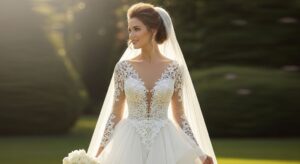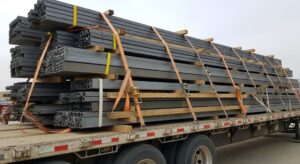Basque Waist vs Natural Waist Comparison

Choosing the perfect dress silhouette can transform your entire look. Whether you’re shopping for a wedding gown, formal event dress, or elegant evening wear, understanding waistline styles is essential. Two popular options that often confuse shoppers are the basque waist and natural waist. Both create stunning silhouettes, yet they fit very differently on the body. The experts at Wedding Style Blog have helped countless brides navigate these choices.
The waistline of a dress dramatically affects how the garment flatters your figure. Additionally, it influences comfort, movement, and overall style. Many women struggle to identify which waistline suits their body type best. Therefore, understanding these two distinct styles will help you make confident shopping decisions.
When considering basque or v waist long dress how they fit, it’s important to recognize that each creates a unique aesthetic. However, the differences extend beyond appearance. These waistlines affect posture, comfort levels, and even how accessories complement your outfit. Let’s explore what makes each style unique.
Understanding the Natural Waist
The natural waist sits at your body’s narrowest point. Typically, this falls between your ribcage and hip bones. Most people find their natural waist about an inch above their belly button. This classic waistline has remained popular throughout fashion history.
Natural waist dresses follow your body’s organic curves. They create a balanced, proportional silhouette that works for many body types. Furthermore, this style allows for easy movement and breathing. You won’t feel restricted during long events or celebrations.
This waistline style pairs beautifully with A-line skirts, ball gowns, and sheath dresses. Moreover, it provides a traditional, timeless appearance. Many designers favor natural waistlines because they flatter various figures without overwhelming the wearer.
What Is a Basque Waist
The basque waist, also called a V-waist or dropped waist, creates a distinctive pointed shape. This waistline dips down in the front, forming a V or U shape that extends below the natural waist. The style originated in the 19th century and has remained a sophisticated choice for formal wear.
Basque waistlines elongate the torso visually. They create the illusion of a longer, leaner upper body. Additionally, this style draws attention downward, emphasizing the hips and creating an hourglass effect. The pointed front serves as a beautiful focal point for embellishments.
This dramatic waistline works especially well on wedding dresses and evening gowns. However, it requires careful fitting to achieve the desired effect. The point should sit comfortably without pulling or gaping.
How Basque Waists Fit Differently
Basque waistlines require precise tailoring. The pointed front must align perfectly with your body’s center. Therefore, off-the-rack basque dresses often need alterations. The fit should feel snug but never tight around the ribcage and upper hips.
This style adds structure to the bodice area. Many basque waist dresses include boning or internal support. Consequently, they provide excellent posture support and shape definition. You’ll notice the dress holds its form beautifully throughout wear.
Movement feels different in a basque waist dress. The lower waistline can slightly restrict bending at the waist. However, most wearers adjust quickly. The trade-off comes in the form of stunning visual impact and elegant lines.
Natural Waist Fit Characteristics
Natural waist dresses offer intuitive fitting. The waistband sits where your body naturally bends. This makes sitting, dancing, and moving comfortable throughout the day. Additionally, breathing feels unrestricted compared to lower waistlines.
These dresses typically feature less rigid construction. While some include light boning, many rely on fabric and cut for shaping. Therefore, they often feel lighter and more flexible. This makes them excellent choices for long events.
Alterations for natural waist dresses are usually straightforward. Tailors can easily adjust the waist seam up or down. Moreover, this style accommodates body changes better than more structured options. According to fashion experts at Vogue, understanding your natural proportions helps ensure the best fit for any waistline style.
Body Types and Waistline Choices
Different body types benefit from different waistlines. Petite frames often look taller in basque waist styles. The elongated torso creates length and draws the eye vertically. However, very short torsos might feel overwhelmed by deep basque points.
Apple-shaped figures often prefer natural waistlines. This style emphasizes the narrowest point without adding bulk. Meanwhile, pear-shaped bodies can benefit from either style. Natural waists balance proportions, while basque waists add interest to the upper body.
Hourglass figures shine in both styles. Natural waists showcase curves naturally. Basque waists add drama while maintaining balanced proportions. Rectangle body types gain definition from basque waists, which create the illusion of curves.

Style and Aesthetic Differences
Natural waist dresses project classic elegance. They suit traditional ceremonies, conservative venues, and timeless style preferences. Furthermore, they photograph beautifully from all angles without drawing excessive attention to one area.
Basque waist gowns make bold statements. They appeal to fashion-forward brides and event-goers who want distinctive style. The dramatic lines photograph stunningly, especially in profile shots. Additionally, this style pairs beautifully with cathedral trains and elaborate skirts.
Consider your overall wedding or event theme. Romantic, garden, and classic themes suit natural waists perfectly. However, glamorous, art deco, or modern themes shine with basque waistlines. Your personal style should ultimately guide your decision.
Comfort Considerations for Long Events
Comfort matters significantly for events lasting several hours. Natural waist dresses typically allow easier movement. You can sit, dance, and eat without feeling restricted. Therefore, many prefer this style for all-day comfort.
Basque waist dresses require adjustment periods. Some wearers need time to adapt to the lower waistline. However, quality construction ensures comfort once you’re accustomed to the fit. Proper boning placement prevents digging or discomfort.
Consider trying both styles before committing. Spend at least an hour wearing each. Move naturally, sit down, and simulate activities you’ll do at your event. This practical test reveals which style suits your comfort needs.
Accessorizing Different Waistlines
Natural waistlines pair beautifully with decorative belts or sashes. The defined waist provides perfect placement for embellishments. Additionally, simple jewelry works well since the silhouette itself remains understated.
Basque waistlines feature built-in drama. Therefore, they need fewer accessories. The pointed waist serves as a focal point. However, statement earrings or necklaces complement the elegant neckline. Keep belt accessories minimal to avoid competing with the distinctive waistline.
Both styles work with various veil lengths and hairstyles. However, consider overall balance. Dramatic waistlines pair well with simpler veils. Natural waists can handle more elaborate veil designs without overwhelming the look.
Shopping Tips and Fitting Advice
Try multiple styles before deciding. What looks beautiful in photos might feel different in person. Additionally, bring supportive friends who’ll give honest feedback. Take photos from various angles to see how each style photographs.
Schedule adequate fitting time. Basque waist alterations require experienced seamstresses. Natural waist adjustments are simpler but still need professional attention. Budget extra time and money for proper tailoring.
Ask questions about construction and support. Quality understructure ensures all-day comfort. Furthermore, understand care requirements for each style. Some structured bodices need special storage and handling.
Conclusion
Both basque and natural waist styles offer unique benefits for long dresses. Natural waistlines provide classic comfort and universal flattery. They suit various body types and allow easy movement throughout long events. Meanwhile, basque waistlines create dramatic, fashion-forward statements with elongating effects.
Your choice depends on personal style preferences, body type, and comfort priorities. Consider the event formality, your planned activities, and overall aesthetic goals. Moreover, remember that proper fitting makes either style comfortable and beautiful.
Take time trying both options. Trust your instincts about which style makes you feel confident and comfortable. Ultimately, the best waistline is the one that makes you feel absolutely stunning.
Frequently Asked Questions
Can a basque waist be altered to a natural waist?
Yes, but this alteration is complex and costly. It requires restructuring the entire bodice, moving seams, and potentially adding fabric. Most seamstresses can perform this alteration, though it may cost as much as the original dress. Consider this option only if absolutely necessary.
Which waistline is better for plus-size figures?
Both can flatter plus-size bodies when properly fitted. Natural waists work well for defined waists, while basque waists add structure and elongate the torso. Try both styles to determine which feels most comfortable and flattering on your unique figure.
How much does basque waist tailoring typically cost?
Basque waist alterations typically cost between $150 and $400, depending on complexity. Simple adjustments run less expensive than major reconstructions. Always get quotes from experienced bridal seamstresses who understand structured bodices and their fitting requirements.
Do basque waist dresses work for outdoor weddings?
Absolutely. Basque waist dresses suit any venue when constructed with appropriate fabrics. However, consider temperature and mobility needs. Outdoor venues requiring significant walking might make natural waists more practical for comfort throughout the day.
Can you add a basque waist to an existing dress?
Skilled seamstresses can add basque waists to some dresses. This works best with dresses that have natural waistlines and adequate fabric. The alteration requires adding a pointed panel, restructuring the bodice, and ensuring proper support. Consult an experienced seamstress to assess feasibility.
Related Topics:
How to Remove Stains from a White Shirt: Proven Methods for a Spotless Look







